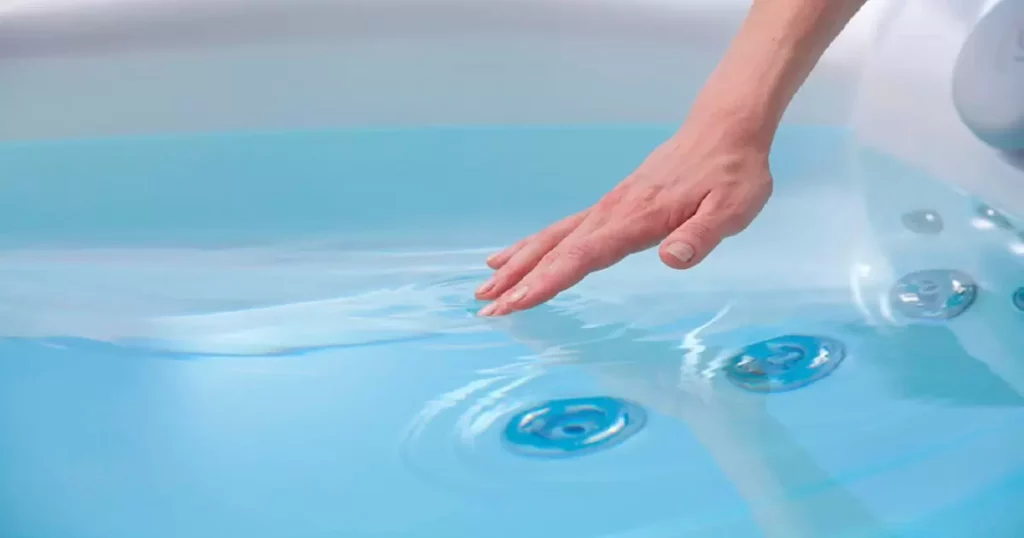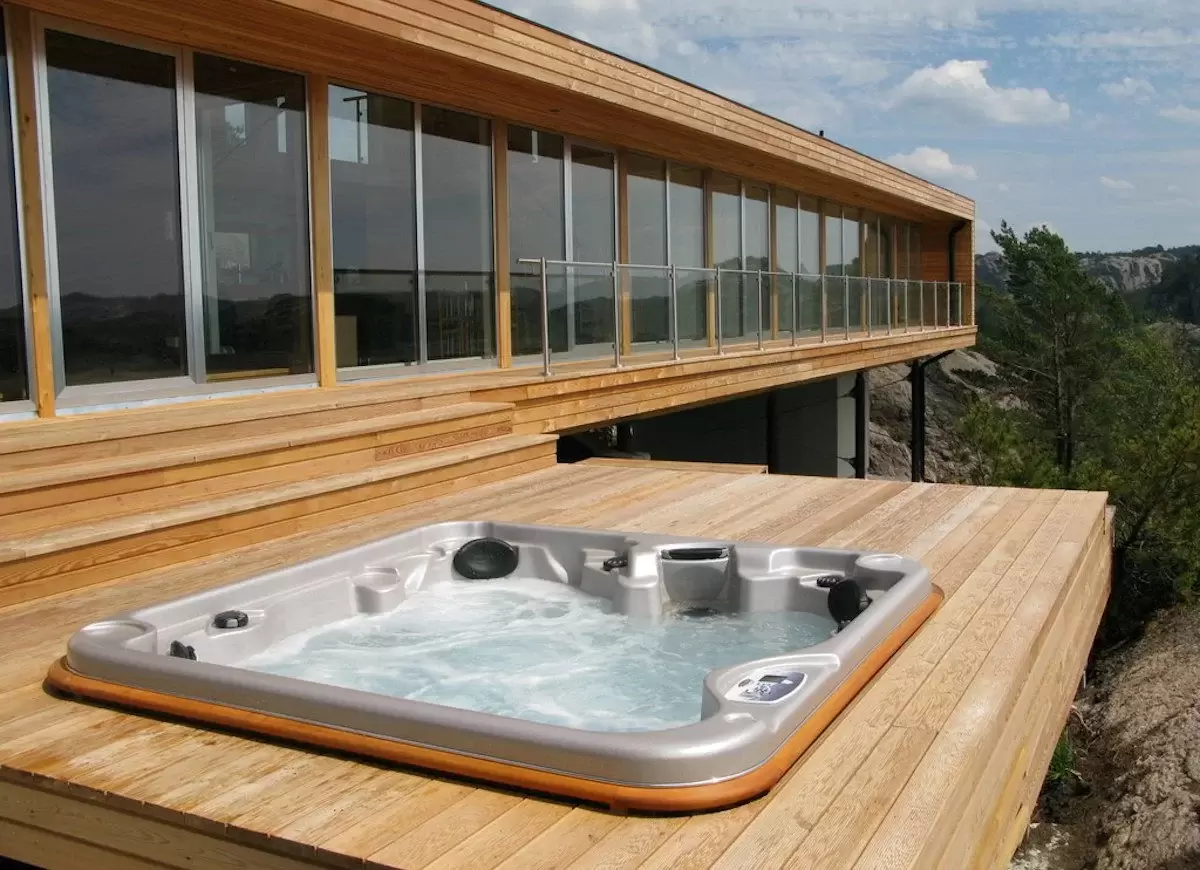A Jacuzzi’s temperature typically ranges from 100 to 104 degrees Fahrenheit. This range is considered the optimal comfort level for most people, providing a soothing and relaxing experience. Jacuzzis are designed to maintain this temperature to ensure a comfortable and enjoyable soak.
How Hot Is A Jacuzzi? Imagine sinking into a warm, bubbling oasis, feeling the stress melt away as the hot water surrounds you. Understanding the ideal temperature of a Jacuzzi is crucial for a safe and enjoyable experience. In this article, we will explore the perfect Jacuzzi temperature and why it matters.
Speaking of comfort, it’s essential to maintain a clean and hygienic environment in your Jacuzzi. Additionally, if you’re interested in keeping your home clean and cozy, you might want to learn more about steam cleaning a memory foam mattress. This process can help remove dust, allergens, and stains, ensuring a healthier sleep environment for you and your family.
Historical Evolution of Jacuzzi Temperatures
Jacuzzis, originating as therapeutic pools, have evolved significantly in terms of temperature control. Initially, their temperatures were limited by the capabilities of heating technologies. As advancements occurred, the ability to precisely control and maintain heat improved, allowing for a broader range of temperatures to cater to different preferences and needs.
This evolution reflects a growing understanding of how temperature affects relaxation and therapy. Early Jacuzzis often had a one-size-fits-all approach to heat. Now, users enjoy a customizable experience, aligning temperature with individual comfort and health requirements, showcasing a significant shift in how we view and use Jacuzzis.
Standard Temperature Ranges for Jacuzzis
The standard temperature range for Jacuzzis typically lies between 100°F to 104°F (37.8°C to 40°C). This range is considered safe and comfortable for most adults. At these temperatures, the body can relax without overheating, making it ideal for leisure and therapeutic purposes.
It’s important to note that this range is not one-size-fits-all. Factors like personal preference, intended use, and duration of stay in the Jacuzzi can influence the ideal temperature. For instance, longer sessions might require slightly lower temperatures for safety.
Regulating and Measuring Jacuzzi Temperatures
Modern Jacuzzis are equipped with sophisticated systems for regulating and monitoring temperature. These systems ensure a consistent and safe heat level, which is crucial for both enjoyment and health. Temperature controls are typically user-friendly, allowing for easy adjustments.
| Temperature Range (°F) | Purpose |
| 95°F – 98°F | Therapeutic use, extended relaxation |
| 99°F – 102°F | General comfort, leisure use |
| 103°F – 104°F | Intense heat, short duration soaks |
This table summarizes key data related to Jacuzzi temperatures, illustrating how different settings cater to various needs.
Health Benefits of Optimal Jacuzzi Heat
The right Jacuzzi temperature can offer numerous health benefits. Warm water relaxes muscles, easing tension and pain. This is particularly beneficial for those with arthritis or muscle injuries. The heat also improves circulation, which can aid in recovery and overall cardiovascular health.
Moreover, the heat from a Jacuzzi can have a soothing psychological effect. It reduces stress and promotes mental relaxation, contributing to better sleep and overall well-being. These benefits highlight the importance of maintaining optimal temperature for maximum therapeutic effect.
Safety Guidelines for Jacuzzi Temperature
Safety is paramount when it comes to Jacuzzi temperatures. Excessively high temperatures can pose risks, especially for vulnerable individuals like children, pregnant women, and those with certain health conditions. It’s generally advised to avoid temperatures over 104°F.
Additionally, it’s important to limit soaking time to prevent overheating and dehydration. Drinking water before and after using a Jacuzzi can help mitigate these risks. Users should always listen to their body and exit the Jacuzzi if they start feeling uncomfortable or dizzy.
Impact of Temperature on Jacuzzi Maintenance

The temperature of a Jacuzzi also impacts its maintenance. Higher temperatures can accelerate the growth of bacteria and algae, necessitating more frequent cleaning and chemical treatment. Balancing heat with proper sanitation is crucial to ensure a safe and hygienic environment.
Moreover, consistent high temperatures can strain the Jacuzzi’s heating system, potentially leading to wear and maintenance issues. Regular checks and maintenance of the heating system are essential, especially if the Jacuzzi is often used at the higher end of the temperature spectrum.
Adjusting Jacuzzi Temperatures for Different Users
Adjusting Jacuzzi temperatures for different users is key to a personalized experience. For children and older adults, a lower temperature range is recommended for safety. Similarly, those seeking therapeutic benefits might prefer a slightly cooler setting to comfortably extend their time in the Jacuzzi.
For social settings, finding a middle ground that suits all users is important. A temperature around 100°F is often a comfortable compromise. It’s essential to consider everyone’s needs and health conditions when setting the Jacuzzi temperature.
Comparison with Other Hydrotherapy Temperatures
Comparing Jacuzzi temperatures with other hydrotherapy methods highlights the versatility of water-based treatments. For instance, hot springs, which are naturally heated, can vary greatly in temperature and offer a more natural experience, though with less control over the heat.
On the other hand, hot baths in a home setting allow for complete control over temperature but lack the dynamic water movement of Jacuzzis. Each method offers unique benefits, and understanding these differences can help users choose the best option for their needs.
FAQs
What is the recommended temperature range for a Jacuzzi?
The recommended temperature range for a Jacuzzi is typically between 100 to 104 degrees Fahrenheit.
Is it safe to go above the recommended Jacuzzi temperature?
Going above the recommended temperature can be uncomfortable and potentially unsafe, so it’s best to stay within the recommended range.
Can I adjust the temperature of my Jacuzzi to suit my preferences?
Yes, you can usually adjust the temperature of your Jacuzzi to your desired comfort level.
Why is it important to maintain the proper Jacuzzi temperature?
Maintaining the proper Jacuzzi temperature ensures a safe and enjoyable soaking experience.
Are there any health considerations when using a Jacuzzi at high temperatures?
Yes, using a Jacuzzi at very high temperatures can be risky, especially for individuals with certain medical conditions. It’s essential to be cautious and consult a healthcare professional if you have any concerns.
Conclusion
Jacuzzis offer a blend of relaxation and health benefits, making their temperature a key factor in their use. The ideal heat ranges between 100°F and 104°F, providing a comfortable experience for most people. It’s essential to adjust this based on individual needs and health conditions. Balancing the right temperature with safety and maintenance considerations ensures a pleasant and beneficial Jacuzzi experience.
Exploring how Jacuzzi temperatures compare with other forms of hydrotherapy shows the unique benefits of these heated pools. Whether it’s for relaxation, pain relief, or social gatherings, understanding and regulating Jacuzzi temperatures enhances their enjoyment. Remember, the perfect temperature is not just about heat; it’s about creating a safe, comfortable, and therapeutic environment.








